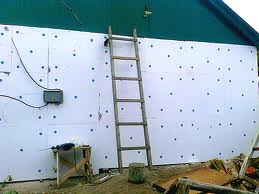 The polystyrene foam plates are one of the best and most convenient building materials used for the insulation of walls, floors or roofing buildings. Thanks to its properties, the foam provides sufficiently high insulation of the premises. The advantages of this material also include its strength. It can make a rather large mechanical load having a minimal density.
The polystyrene foam plates are one of the best and most convenient building materials used for the insulation of walls, floors or roofing buildings. Thanks to its properties, the foam provides sufficiently high insulation of the premises. The advantages of this material also include its strength. It can make a rather large mechanical load having a minimal density.
The insulation of the walls of the polystyrene foam can be done not only in low-rise buildings, but also when erecting large-scale houses. Also, this material is used to reconstruct old buildings, which is possible due to its density, which is usually minimal. The material does not give additional load on the supporting structures.
Before starting work, the processed surface is examined on the need for cleaning or plaster. For washing, you can use a strengthening water under strong pressure, detergents. After this wall, it is necessary to cover the primer. The mixture is worth it to choose quality. If the surface has a porous texture (for example, in buildings that are built from foam concrete), it is recommended to make a primer twice. The polystyrene foam plates are easy to install them, they simply cut, and they are attached using a special adhesive composition or dowels.
The insulation of walls by polystyrene fiber allows to significantly increase not only the thermal insulation of the room, but also sound insulation. Execution of such works is not recommended if the air temperature is outside less than 5 or more than 30 degrees. Do not install plates with a strong impact wind or during precipitation.
When choosing glue for plates, you must first examine the instructions. It should be written in it that the tool is suitable for gluing polystyrene foam. In addition, the surface that is processed should be completely dry. To obtain a better result, the adhesive solution can be used in combination with dowels. The insulation of the walls of the polystyrene foam is as follows. Glue in several places are applied to each slab, after which the panel is pressed against the surface. For better fixation, you can stop the slabs with boards. After the entire wall is glued, the slots between the sheets should be treated with mounting foam.
In order for under the insulation, the condensate is not formed, it is recommended to leave small openings for ventilation in the stoves above the windows and doors (if any). These openings advise to close the heat-insulating material with vapor-permeable properties (for example, mineral wool).
After the foam plastic is laid, it can be treated with plaster or placing it with facing tiles. If the first method is selected, then use better a special brush having two edges, smooth and gear. After the insulation of the walls are made by polystyrene foam, a special adhesive base (about 1 meter) for the reinforcing layer is applied to the material. From above the mesh made of fiberglass. With the help of a smooth edge of the brush, it "takes off" in the primer layer.
If the wall should be smooth, it is recommended to sharpen it. The finished surface can be colored structural paint by choosing any color for this. Polystyrene foam is related to self-refining substances, however, when heated, it can melt and distinguish toxic substances, therefore it is better to use it for the outer walls built from non-combustible materials.
Warming at home with their own hands - the task is very important, so approach to its solution follows the maximum responsibly. After all, it is from the correct thermal insulation that will depend on how cozy and well will be in the house. In addition, it will help reduce heating costs.


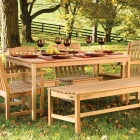
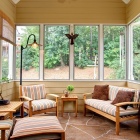
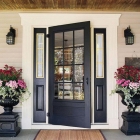
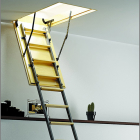


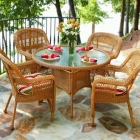
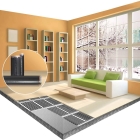
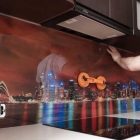
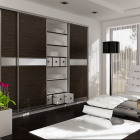

 Start a discussion ...
Start a discussion ...